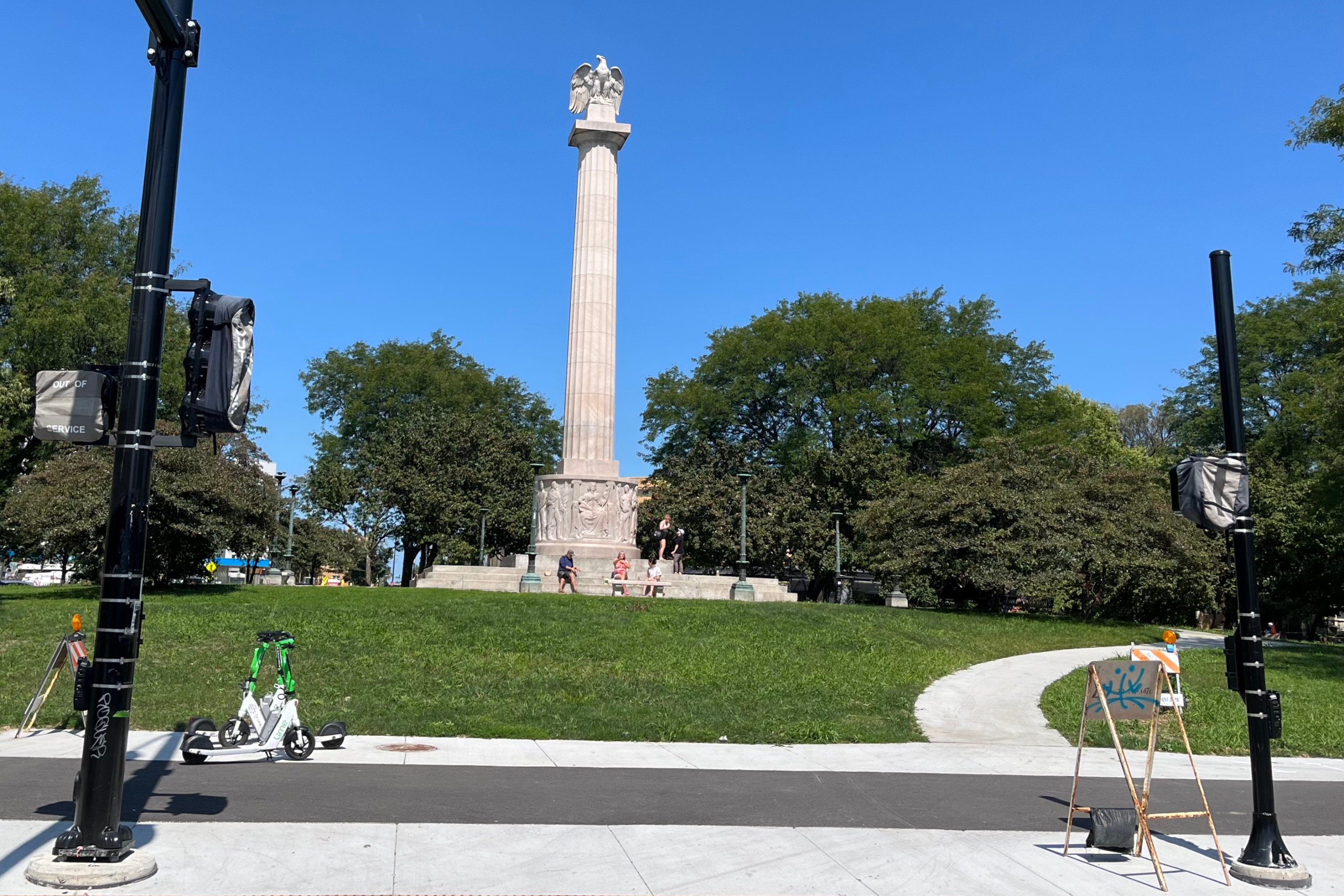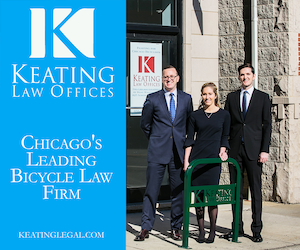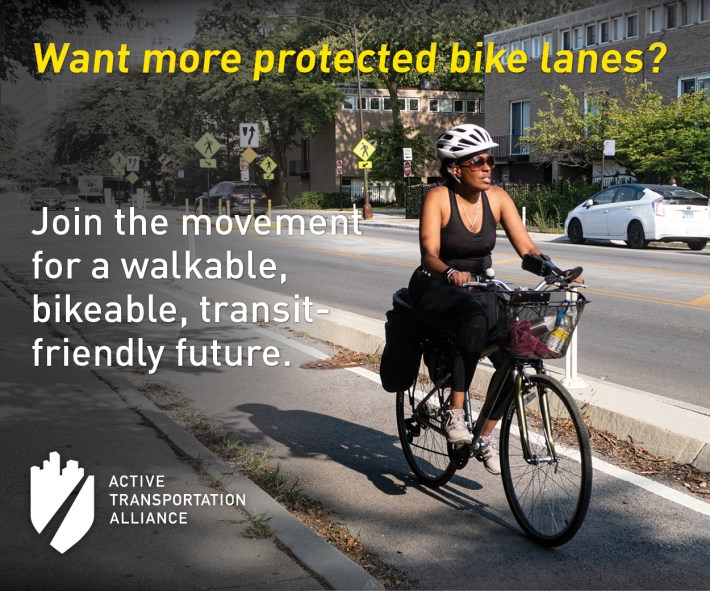
See the update about the new signs at the bottom of this post, originally published on April 16, 2025.
DLSD traffic safety bill passes State Senate
While speed cameras are controversial in Chicago, data shows that they've prevented hundreds of serious and fatal crashes here. But while DuSable Lake Shore Drive is one of our city's deadliest roadways, current State law dictates that automated traffic enforcement may not be installed there, only on surface streets within an eighth mile of schools and parks.
Back in June 2022, Illinois got more more security cameras on the Drive, expressways, and interstates to help address the region's highway shooting and carjacking epidemic. But elected officials missed the opportunity to do something about crashes on these roads. The state legislation that expanded the use of the surveillance cameras explicitly forbade them from being used to enforce "petty offenses" like speeding.
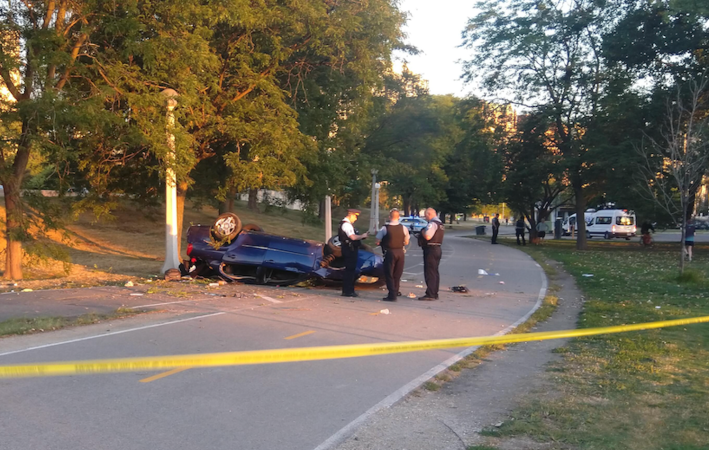
However, the consequences of speeding on the Drive are often tragic. According to State Senator Sara Feigenholtz (D-6th) during the last five years the coastal highway has seen over 16,000 collisions, with 59 of them fatal, and more than 4,000 injuries. The Chicago Department of Transportation reported that at least six people on foot and five people in cars were killed on or near DLSD in 2024.
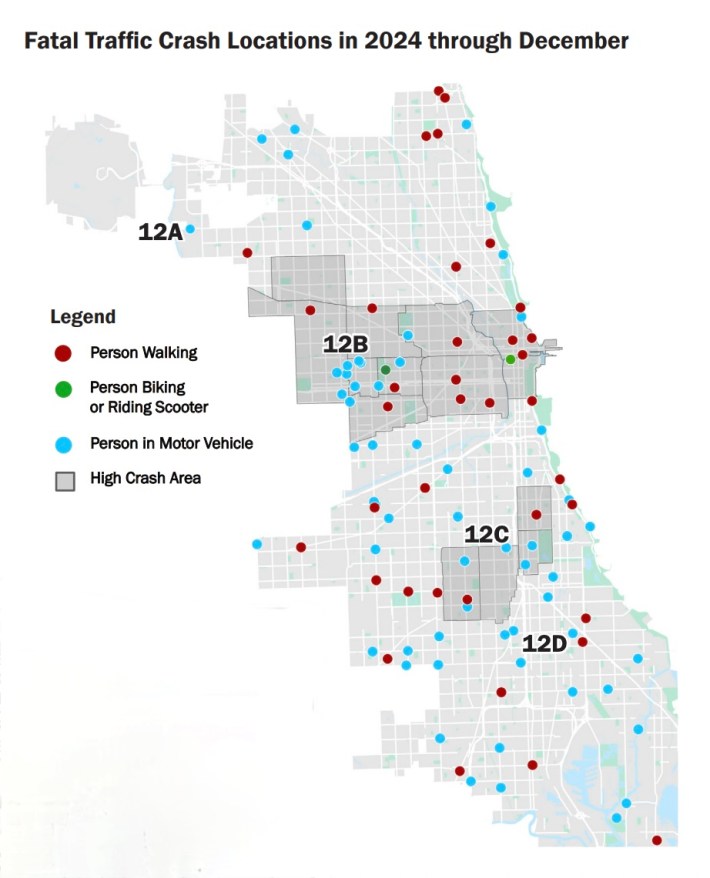
Sen. Feigenholtz wants to address these numbers. Along with Sen. Robert Peters (D-13th), she recently sponsored Senate Bill 1507, which calls for a study of dangerous driving and traffic violence on the Drive, which could eventually result in implementing speed cameras there. The legislation passed in the Senate last Thursday.
The law would tap the University of Illinois Chicago’s Urban Transportation Center to study collision data, potentially destructive driver behavior, and potential solutions through automated enforcement. Sen. Feigenholtz has pointed to successful "randomized speed camera" programs in the Netherlands and Germany as a possible model for our city.
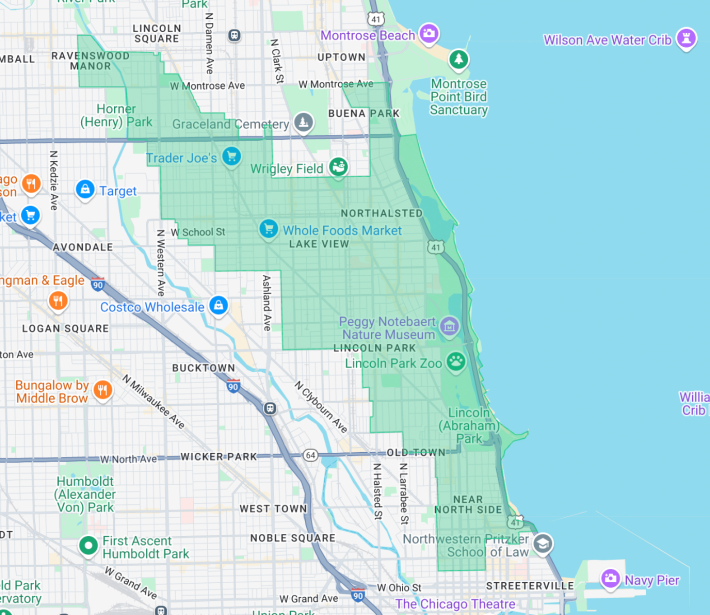
This issue is personal for Sen Feigenholtz, since her North Side district includes almost five miles of the highway. "I filed this legislation to begin with a study and start the conversation on how to fix the problem of disproportionate vehicle [crashes], injuries and fatalities on DuSable Lake Shore Drive compared to other streets and highways," she told Streetsblog in a statement.
"I’ve not only witnessed repeated crashes on the Drive, I’ve also heard from my constituents for years about dangerous speeding and accidents on both neighborhood streets and on DLSD," Sen Feigenholtz added. "My constituents are asking the State and City to do more to improve safety along the Drive, and this measure begins that process.”

We asked Sen. Feigenholtz exactly how randomized speed cameras in Europe work differently than Chicago-style cams, and what the advantages of that approach are. "Randomized speed cameras reduce speeding by creating uncertainty," she replied. "Drivers are less likely to speed if they don’t know where cameras are monitoring. Long-term behavioral studies show this unpredictability leads to lasting compliance. Even when cameras were removed, drivers maintained safer habits."
"European countries are already deploying AI-driven speed enforcement on a wide scale," Sen. Feigenholtz added. "Further research can help guide Illinois toward solutions and best practices that have the potential to change drivers’ behavior in the long term."

Senate Bill 1507 is now awaiting further action in the Illinois House of Representatives, Sen. Fegenholtz said. "I’m looking forward to seeing the legislation taken up so we can begin studying how best to improve safety along the Drive.”
The UIC study is supposed to take six months and have a $90,000 pricetag, a spokesperson for Feigenholtz’s office told the Chicago Tribune.
After pedestrian death at Roosevelt/DLSD, calls for new signage
Sadly, the DLSD crash issue also made headlines earlier this month, when a pickup driver, 26, struck and killed a male pedestrian, 72, at the signalized intersection of Roosevelt Road and DLSD, according to police. Around 5:09 a.m., the victim, who was apparently trying to cross the Drive, which is not permitted here, was standing in a median when the motorist hit him. He was pronounced dead at the scene.
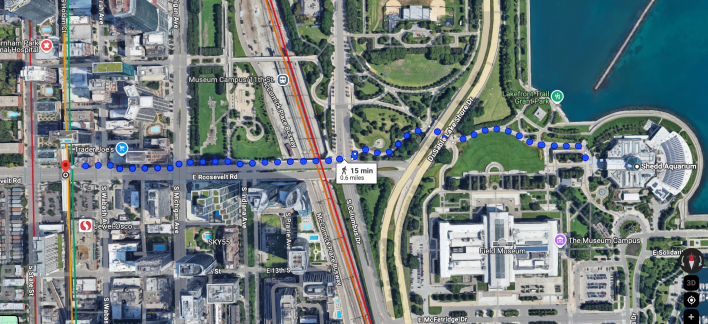
Instead of crossing DLSD here, pedestrians are supposed to use an underpass and path that leads from Columbus Drive, just west of the highway, to the Museum Campus. As reported by Block Club's Jamie Nesbitt Golden, in the wake of the recent tragedy, neighbors have been calling for better signage to direct visitors to the tunnel.
There was a similar case nearby in February 2020, when a driver fatally struck Mohamed Salah Ali, 29, as he tried to cross Lake Shore Drive at McFetridge Drive, between Soldier Field and the Field Museum of Natural History. While this junction has stoplights as well, it also lacks sidewalks and crosswalks, and there are signs banning pedestrian crossings.
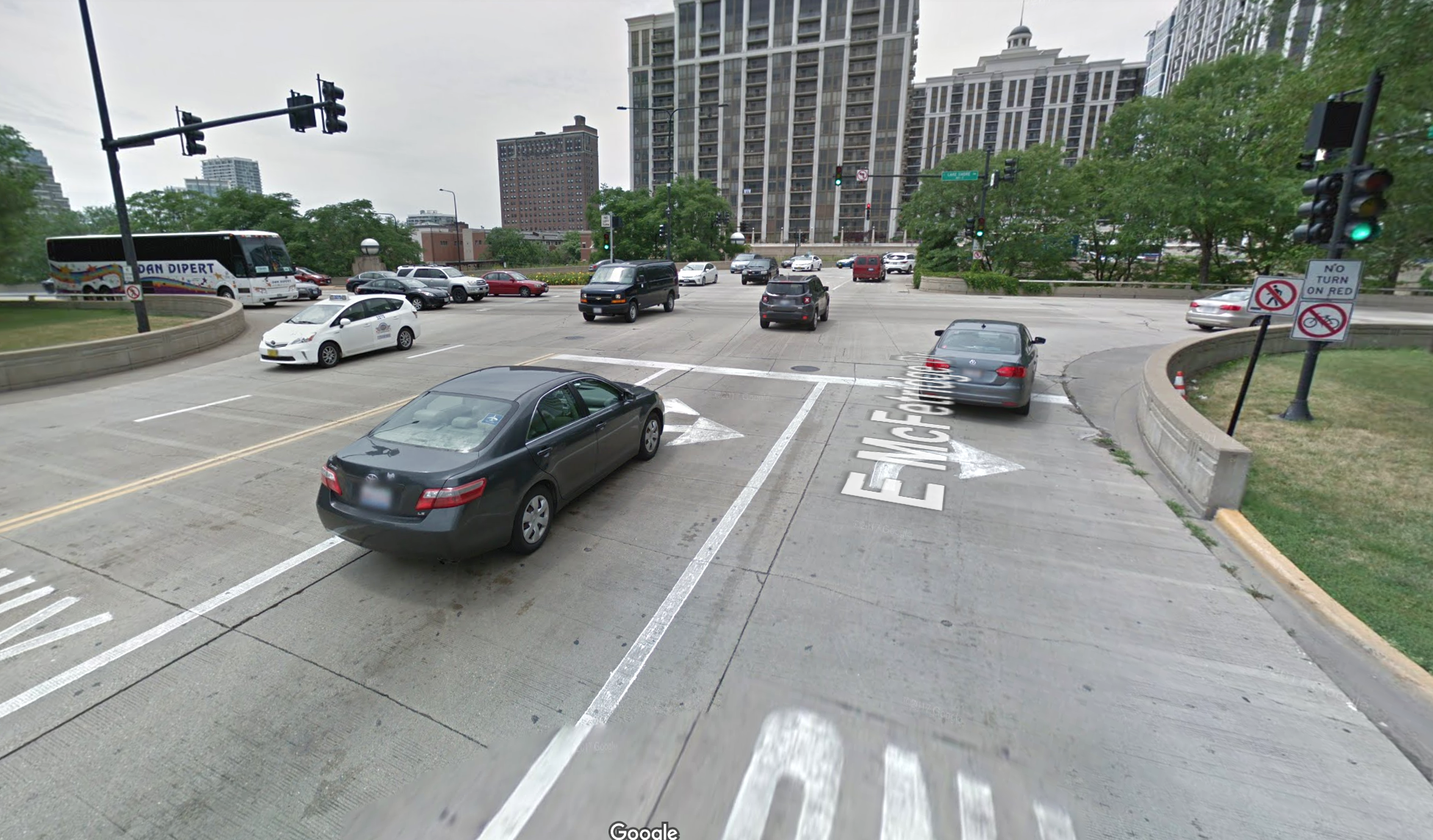
Nesbitt Golden asked me for my take on Roosevelt/DLSD situation. "Getting from Roosevelt Road to the Museum Campus via the designated, somewhat indirect route, probably isn’t super-intuitive for visitors,” I told her via email. “That may be a factor in why tragedies like this happen from time to time. Better, more obvious signage would definitely help. In a perfect world, it would be possible to walk, bike and e-scoot directly east on Roosevelt to the Shedd Aquarium without detouring. Maybe it would make sense to offer a direct multi-use bridge over DLSD.”

After giving the issue some more thought, it seems unlikely that a city with a nearly $1 billion budget deficit would be interested in spending millions on a new bridge at a location where there's already an underpass and path. Creating a street-level pedestrian crossing at Roosevelt/DLSD is another option, but crossing the eight lanes at grade would be much more dangerous than taking the underpass. That was sadly demonstrated in February 2022, when a driver ran a red and fatally struck Gerardo Marciales, 41, as he legally rode a Divvy bike across DLSD at Balbo Drive, five blocks north of Roosevelt.
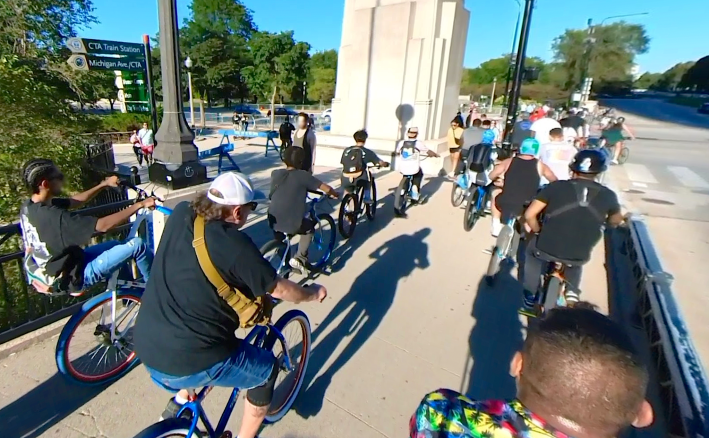
So the underpass and indirect path will probably remain the sole option for pedestrians and bike riders at Roosevelt and the Drive who want to get to the Museum Campus. "There is only one street-level sign at Roosevelt and Columbus directing pedestrians to the underpass," Nesbitt Golden noted. If we want to avoid future pedestrians deaths, at the very least the City should install wayfinding signs at multiple corners of that intersection, to direct visitors to the safer crossing.
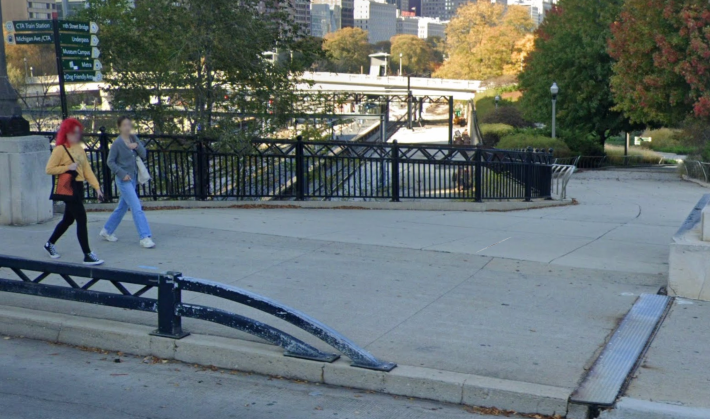
Update 4/25/25, 1:15 PM: Neighborhood resident AR Sakaeda emailed Streetsblog Chicago with the following report. "Three new signs were recently erected regarding Museum Campus access," she said. "The first is at the southeast corner of Indiana Avenue and Roosevelt Roosevelt."
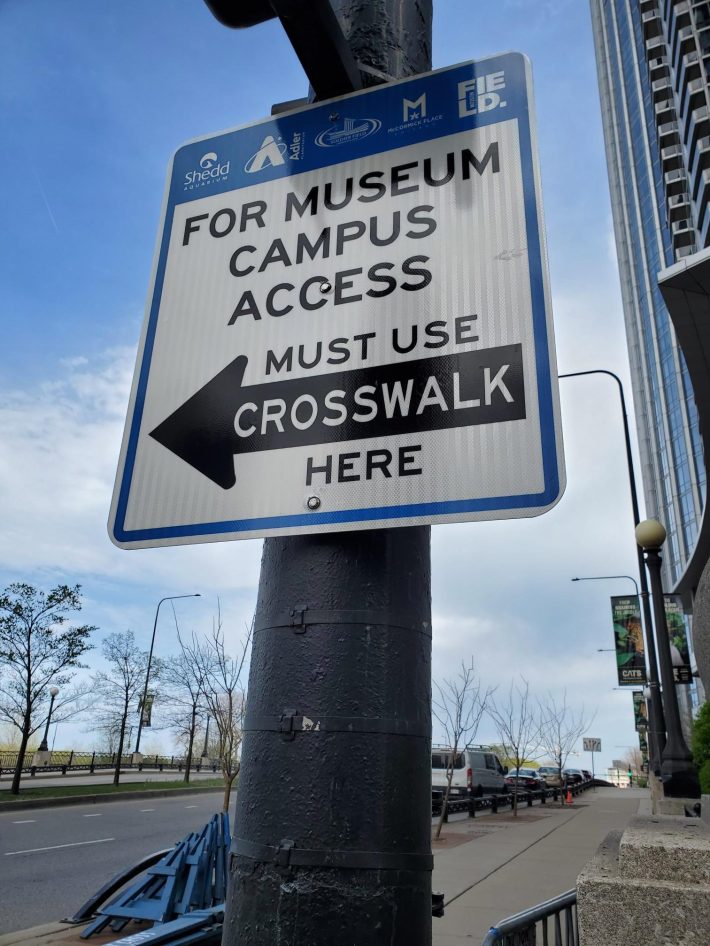
"The second is on the northeast corner of Indiana and Roosevelt," Sakaeda wrote. See the image at the top of this post.
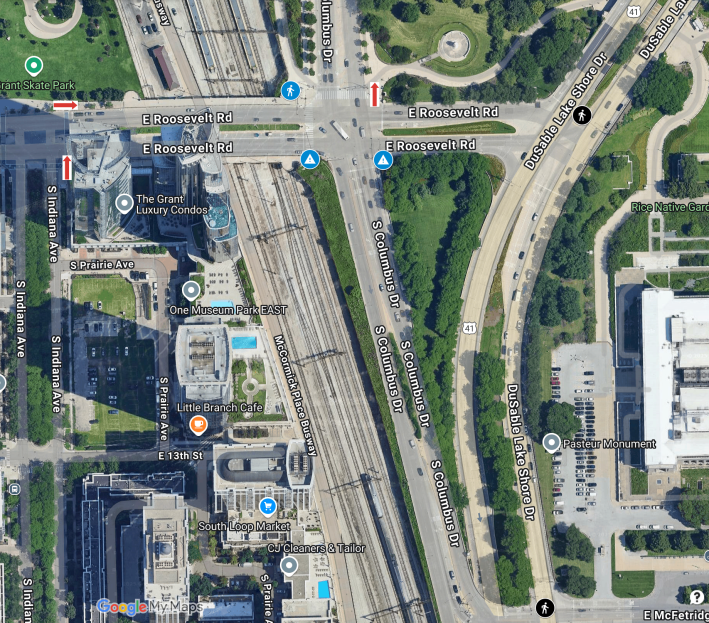
"The third is at the northeast corner of Columbus and Roosevelt," Sakaeda said. "These signs went up last week (or at least that's the first time I've noticed them.)"
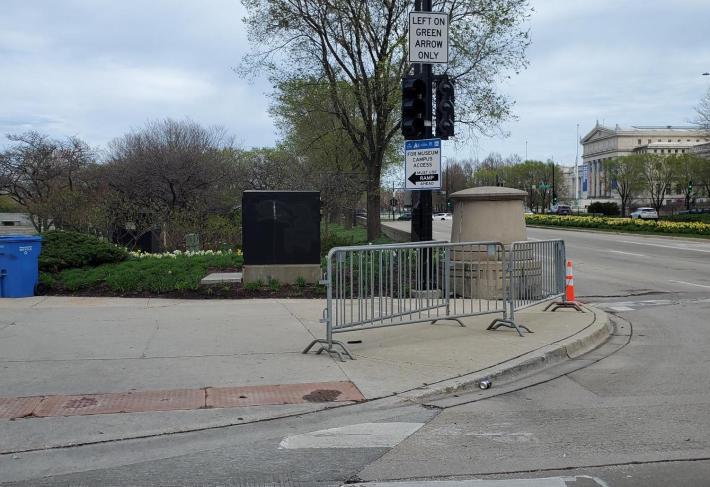
"Before this, there have been signs at Columbus and Roosevelt indicating no pedestrians (southeast corner) and no pedestrian crossing (southwest corner) but they are not particularly noticeable," Sakaeda noted. "Thanks for all your work."
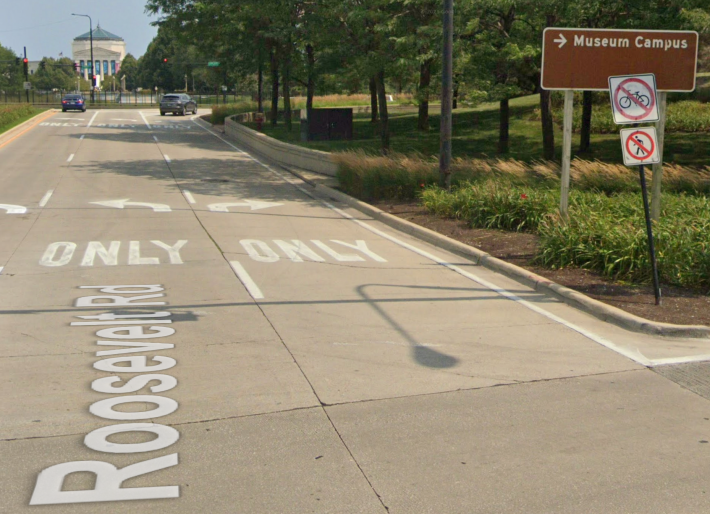

It's good that the authorities had more wayfinding signage installed at this location. But it's tragic that action wasn't take on this issue before another person lost his life.
Read the Block Club Chicago piece here.

Did you appreciate this post? Streetsblog Chicago is currently fundraising to help cover our 2025-26 budget. If you appreciate our reporting and advocacy on local sustainable transportation issues, please consider making a tax-deductible donation here. Thank you.


